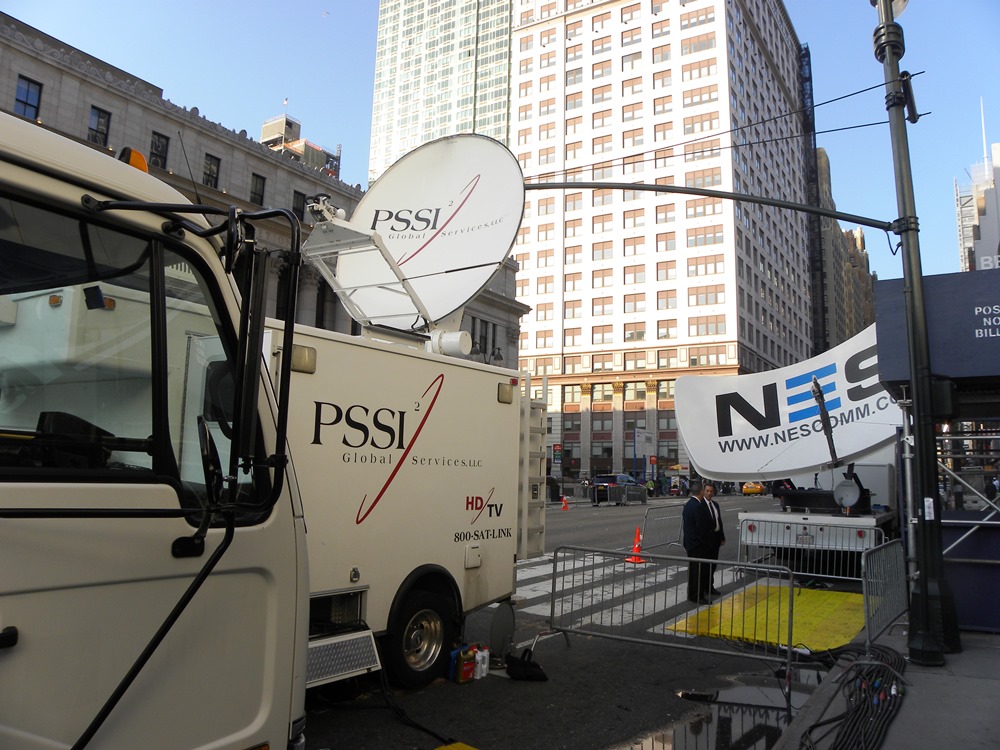
Here is a C-band satellite uplink truck (The dish behind it is a KU-band dish).
This is a band of frequencies used for satellite transmission.
The frequencies used are centered around 6 GHz for transmit up to the satellite,
and centered near 4 GHz from the satellite down to the receiver. Also see SNG below or News Gathering\Satellites on the menu ribbon.
When Keith was involved with outside broadcasts he often had to interface and work with the operators of these vehicles.

Engineer In Charge
The person who generally works for the owner of the production unit who is responsible for insuring that the truck/trailer meets the needs of the client renting/leasing it as contracted.
This person is the liason between the truck company and the client.
Keith was an EIC at one time. Goto Remote TV Production\Production Truck Tour on the menu ribbon to see what this world is like.


Electronic News Gathering
These trucks use microwave signals to send video and audio back to the station.
You can find more information under News Gathering\News Trucks and News Gathering\Microwaves.
Keith's department was in charge of the televsion station's ENG fleet.

A band of frequencies up in the 12 GHz region. See SNG for more information.
Keith was an operator of these trucks at one time.



This is really an archaic term. Microwaves literally means radio waves that have very short wavelengths.
They range from one meter (300 MHz) down to 0.1 cm (300 GHz). Thus that includes the C-band and KU-bands also.
But to news folks ENG trucks are also called 'microwave' trucks.
You can find more information under News Gathering\Microwaves.
Keith's department's ENG Microwave trucks would beam their signals to a number of microwave receive sites that his station had.
Known as 'Outside Broadcasts' by the Europeans, this is the process of doing television production outside of the studio. This could be by a single camera or many-many cameras.
Keith worked on large examples of these units, first as a technician, then as a EIC. Goto Remote TV Production\Remote Truck Tour on the menu ribbon.

Systems Integation
From wiki: The process of bringing together the component sub-systems into one system.When Keith no longer worked on the remote production units he moved into system integration
There are a number of steps in the process:



Satellite News Gathering
These trucks, there are some satellite vans, use the KU band of frequencies. These are up in the 12 GHz range.
This is the same range of frequencies used by home satellite systems like DirecTV and Dish.
Since these frequencies are much higher than C-band satellite frequencies the dishes that focus the signal towards the satellite can be smaller.
The drawback is that heavy rain can cause the signal to fade. Anyone who has satellite TV has probably experienced this.
The left two pictures are of KU-band trucks or just KU trucks for short. The picture on the right shows a KU dish (left) compared to a C dish (right).
You can find more information under News Gathering\Satellite on the menu ribbon.
Keith was an operator on these trucks at one time.